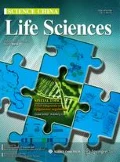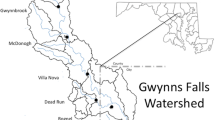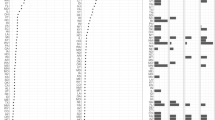Abstract
Two-thirds of the coastal rivers and bays in the United States are degraded from nutrient pollution, and nitrogen inputs these waters continue to increase. The nitrogen comes from a variety of sources, including runoff from agricultural fields, concentrated animal feeding operations, atmospheric deposition from fossil fuel combustion, and sewage and septic wastes. Technical solutions for nitrogen pollution exist at reasonable cost. That most of these solutions have not yet been implemented to any significant extent across the United States suggests that new policy approaches are necessary. The best solution may involve a combination of voluntary and mandatory approaches, applying different approaches to different sources of nitrogen pollution. A watershed-based approach that relies heavily on voluntary mechanisms (such as crop-yield insurance to reduce over-fertilization) is likely to be the most effective for some sources of nitrogen (such as runoff from agricultural fields), while a uniform national regulatory approach may be better for others (such as NOx emissions from fossil fuel combustion). Implementation of management strategies should be carefully coupled to monitoring programs to assess the effectiveness of these strategies. While both nitrogen and phosphorus are important to control, the focus should be on nitrogen management, in part because nitrogen is more generally the causal agent of coastal eutrophication. Also, while nitrogen-control practices tend to also reduce phosphorus pollution, phosphorus-control practices often have little effect on nitrogen. Although current scientific and technical knowledge is sufficient to begin to make substantial progress toward solving coastal nitrogen pollution, progress will be made more quickly and more cost effectively with increased investment in appropriate scientific research.
Similar content being viewed by others
References
Bricker, S. B., Clement, C. G., Pirhalla, D. E., et al., National Estuarine Eutrophication Assessment: A Summary of Conditions, Historical Trends, and Future Outlook. Silver Springs: National Ocean Service, National Oceanic and Atmospheric Administration, 1999.
EPA, National Coastal Condition Report, U. S. Environmental Protection Agency, 2001, EPA-620/R-01/005.
NRC, Clean Coastal Waters: Understanding and Reducing the Effects of Nutrient Pollution, Washington: National Academy Press, 2000.
Howarth, R. W., Anderson, D., Cloern, J. et al., Nutrient pollution of coastal rivers, bays, and seas, Issues in Ecology, 2000, 7: 1–15.
Boesch, D. F., Burroughs, R. H., Baker, J. E., et al., Marine Pollution in the United States: Significant Accomplishments, Future Challenges, Arlington: Pew Oceans Commission, 2001.
Nixon, S. W., Coastal marine eutrophication: A definition, social causes, and future concerns, Ophelia, 1995, 41: 199–219.
Ryther, J. H., Dunstan, W. M., Nitrogen, phosphorus, and eutrophication in the coastal marine environment, Science, 1971, 171: 1008–1012.
Melillo, J. M., Cowling, E. B., Reactive nitrogen and public policies for environmental protection, Ambio, 2002, 31: 150–158.
NRC, Managing Wastewater in Coastal Urban Areas, Washington DC: National Academy Press, 1993.
Howarth, R. W., Boyer, E., Pabich, W. et al., Nitrogen use in the United States from 1961 to 1997 with some future projections, Ambio, 2002, 31: 88–96.
Jaworksi, N. A., Howarth, R. W., Hetling, L. J., Atmospheric deposition of nitrogen oxides onto the landscape contributes to coastal eutrophication in the Northeast US, Environmental Science & Technology, 1997, 31: 1995–2004.
Goolsby, D. A., Battaglin, W. A., Lawrence, G. B. et al., Flux and sources of nutrients in the Mississippi-Atchafalaya River Basin; Topic 3. Report for the Integrated Assessment on Hypoxia in the Gulf of Mexico, Silver Spring: NOAA Coastal Ocean Program Decision Analysis Series, 1999, No. 17.
Goolsby, D. A., Battaglin, W. A., Long-term changes in concentrations and flux of nitrogen in the Mississippi River basin, USA, Hydrological Processes, 2001, 15: 1209–1226.
McIsaac, G. F., David, M. B., Gertner, G. Z., Eutrophication: Nitrate flux in the Mississippi River, Nature, 2001, 414: 166–167.
Howarth, R. W., Billen, G., Swaney, D., Regional nitrogen budgets and riverine N & P fluxes for the drainages to the North Atlantic Ocean: Natural and human influences, Biogeochemistry, 1996, 35: 75–139.
Howarth, R. W., Walker, D., Sharpley, A., Sources of nitrogen pollution to coastal waters of the United States, Estuaries, 2002, 25: 656–676.
Chesapeake Bay Executive Council, Chesapeake Bay Agreement, Annapolis, 1987.
Chesapeake Bay Executive Council, Chesapeake 2000 Agreement, Annapolis, 2000.
Chesapeake Bay Executive Council, Chesapeake Bay Nutrient and Sediment Cap Load Allocation Document (draft), Annapolis, 2004.
Boesch, D. F., Brinsfield, R. B., Magnien, R. E., Chesapeake Bay eutrophication: Scientific understanding, ecosystem restoration, and challenges for agriculture, J. Envion. Qual., 2001, 30: 303–320.
Boesch, D. F., Reversing nutrient over-enrichment of coastal waters: Challenges and opportunities for science, Estuaries, 2002, 25: 744–758.
Rabalais, N. N., Turner, R. E., Scavia, D., Beyond science into policy: Gulf of Mexico Hypoxia and the Mississippi River, Bio-Science, 2002, 52: 129–142
Committee on Environment and Natural Resources (CENR), Integrated Assessment of Hypoxia in the Northern Gulf of Mexico, Washington DC: National Science and Technology Council, 2000.
Boyer, Ed W., Goodale, C. L., Jaworski, N. A. et al., Anthropogenic nitrogen sources and relationships to riverine nitrogen export in the northeastern USA, Biogeochemistry, 2002, 57/58: 137–169.
Valiela, I., Geist, M., McClelland, J. et al., Nitrogen loading frm watersheds to estuaries: Verification of the Waquoit Bay nitrogen loading model, Biogeochemistry, 2000, 49: 277–293.
Conley, D. J., Biogeochemical nutrient cycles and nutrient management strategies, Hydrobiologia, 2000, 41: 87–96.
NRC, Soil and Water Quality: An Agenda for Agriculture, Washington DC: National Academy Press, 1993.
Randall, G. W., Mulla, D. J., Nitrate nitrogen in surface waters as influence by climatic conditions and agricultural practices, J. Environ. Qual., 2001, 30: 337–344.
Mitsch, W. J., Day, J., Gilliam, J. W. et al., Reducing Nutrient Loads, Escpecially Nitrate-Nitrogen, to Surface Water, Ground Water, and the Gulf of Mexico, Topic 5. Report for the Integrated Assessment on Hypoxia in the Gulf of Mexico, Silver Spring: NOAA Coastal Ocean Program Decision Analysis Series, 1999, No. 19.
Randall, G. W., Huggins, D. R., Russelle, M. P. et al., Nitrate losses through subsurface tile drainage in CRP, alfalfa, and row crop systems, J. Environ. Qual., 1997, 26: 1240–1247.
Staver, K. W., Brinsfield, R. B., Use of cereal grain winter cover crops to reduce groundwater nitrate contamination in the Mid-Atlantic coastal plain, J. Soil Water Conserv, 1998, 53: 230–240.
Mitsch, W. J., Day, J., Gilliam, J. W., Groffman, P. M. et al., Reducing nitrogen loading to the Gulf of Mexico from the Mississippi River basin: Strategies to counter a persistent ecological problem, BioScience, 2001, 51: 373–388.
Vitousek, P. M., Aber, J. D., Howarth, R. W. et al., Human alteration of the global nitrogen cycle: Sources and consequences, Ecological Applications, 1997, 7: 737–750.
Choi, E., Yun, Z., in Proceedings of the Strong N and Agro 2003, IWA Specialty Symposium on Strong Nitrogenous and Agro-Wastewater, June 11–13, 2003, Seoul, Korea, 2003, 1, 118.
EPA, National Air Pollutant Emission Trends 1900–1998, U. S. Environmental Protection Agency, EPA-454/R-00-002., 2000.
Mosier, A. R., Bleken, M. A., Chaiwanakupt, P. et al., Policy implications of human-accelerated nitrogen cycling, Biogeochemistry, 2001, 52: 281–320.
Moomaw, W., Energy, industry, and nitrogen: Strategies for decreasing reactive nitrogen emissions, Ambio, 2002, 31: 184–189.
Holland, E. A., Dentener, F. J., Braswell, B. H. et al., Contemporary and pre-industrial global reactive nitrogen budgets, Biogeochemistry, 1999, 46: 7–43.
DEP, New York City 2000 Regional Harbor Survey, New York: New York City Department of Environmental Protection, 2001.
Novotny, V., Imhoff, K. R., Olthof, M. et al., Karl Imhoff’s Handbook of Urban Drainage and Wastewater Disposal, New York: Wiley, 1989.
Peterson, B. J., Wollheim, W. M., Mulholland, P. J. et al., Control of nitrogen exports from watersheds by headwater streams, Science, 2001, 292: 86–87.
EPA, Nutrient Criteria Technical Guidance Manual for Estuarine and Coastal Marine Waters, U. S. Environmental Protection Agency, EPA-822-B-01-003, 2001.
Howarth, R. W., Marino, R., Scavia, D., Priority Topics for Nutrient Pollution in Coastal Waters: An Integrated National Research Program for the United States, Silver Spring: NOAA National Ocean Service, 2003.
US Commission on Ocean Policy, Final report posted to web site on September 20, 2004; http://oceancommission.gov.
Powell, J. Programs that reduce nutrient polluton in coastal waters, Unpublished report to the Pew Oceans Commission, 2001.
NRC, Assessing the Total Maximum Daily Load Approach to Water Quality Management, Washington DC: National Academy Press, 2001.
Doughty, R. S., Water quality trading between point and nonpoint sources: The importance of enforcement, Cornell University: MS thesis, 2003.
EPA, Market-based Approaches to Improve the Nations Waters (Draft), U. S. Environmental Protection Agency, Office of Water, 2001.
EPA, Final Water Quality Trading Policy, Fed. Reg., 68: 1608–01.
Author information
Authors and Affiliations
Rights and permissions
About this article
Cite this article
Howarth, R.W. The development of policy approaches for reducing nitrogen pollution to coastal waters of the USA. Sci. China Ser. C.-Life Sci. 48 (Suppl 2), 791–806 (2005). https://doi.org/10.1007/BF03187119
Received:
Issue Date:
DOI: https://doi.org/10.1007/BF03187119




